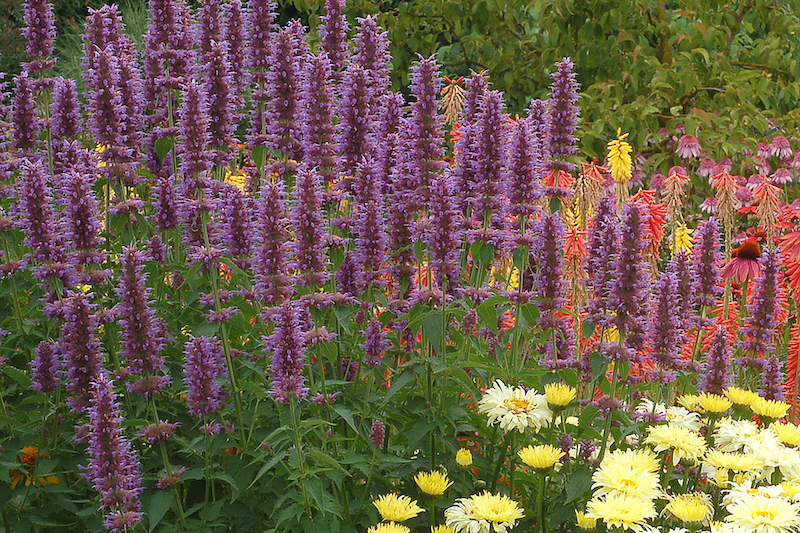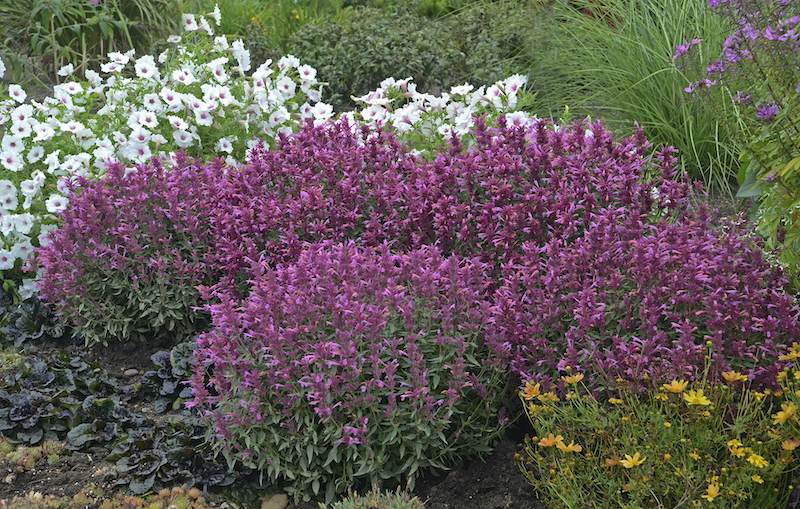Agastache is a wonderful plant to grow in a wide variety of garden designs. The mildly scented foliage and tall flower spikes are irresistible to beneficial pollinators, butterflies, and hummingbirds. Even though it is part of the mint family, it is a fairly well-behaved type, spreading mainly by self-seeding in the late summer. Once established in the garden, Agastache is drought and disease tolerant, blooming nonstop all summer.

What You Need To Plant Agastache
- Transplanting or another small-headed spade
- Organic material for mulching
- Water source
- Hand pruners
- A location that receives at least 6 hours of sun per day.
- A location that drains well year round
Where to Plant Agastache
Agastache thrives in a location with full sun exposure and well-draining soil that is not overly rich in nutrients. This is a tough perennial that will survive in those hard-to-plant parts of your garden that are too dry or hot for other summer bloomers. Heavy clay soil will need amending to lighten it and improve drainage. Adding a 1-2 inch mulch of organic compost annually will help to improve the soil over time while suppressing weeds and lightly feeding the plants throughout the growing season. Agastache looks great and will add height to a hot sunny border alongside Echinacea, ornamental grasses, Crocosmia, and Cosmos. Gardeners in the South should grow Agastache in part shade, with protection from hot afternoon sun.
Agastache Spacing
Space Agastache 18- 24 inches apart from the center of each plant to provide sufficient air circulation and prevent any fungal diseases or pests. Although this plant is in the Mint family, it does not spread aggressively by underground rhizomes or above-ground stems. It spreads mainly by self-seeding late in the summer. These seedlings are easily removed and can be replanted in a more desirable location early in the spring. Support for the flower spikes may only be needed after heavy rains or if plant stems have not been pinched back earlier in the season to encourage stronger, bushy growth.

Steps To Plant Agastache
Step 1 - Dig a hole twice as wide and as deep as the pot your plant was grown in.
Step 2 - Amend the soil by mixing in a few handfuls of organic compost if the location has heavy clay soil.
Step 3 - Remove the rootball from the pot and gently tease out any roots that are circling around the rootball.
Step 4 - Place the rootball into the hole so the base of the plant is level with the surface of the soil.
Step 5 - Backfill the hole, making sure to lightly firm around the rootball and remove any large air pockets.
Step 6 - Water the plant in well. This also helps to fill in any air pockets near the rootball.
Step 7 - Spread a 2-3 inch layer of mulch over the root zone, avoiding the base of the plant and the top growth.
Step 8 - Trim back any stems or flower spikes that are damaged to tidy up the plant.
When to Plant Agastache
Planting perennials early in the spring will allow them to develop strong root systems quickly before the hottest weather of summer arrives. Wait until the soil can be worked and is no longer sticky or muddy. The new plants will be able to tolerate short periods of cooler weather in the spring with no extra protection. Planting during the summer can be done, although extra watering will be necessary to help the root system settle in.
Transplanting Agastache
As with other perennials, Agastache will thrive with regular dividing and transplanting. Divide a large clump every 2-3 years, which will allow you to multiply your plant stock while rejuvenating the older plants. The best time to divide is when the new growth emerges in the spring. The soil will be easier to work and the quickly growing roots will establish easily. Transplant any new seedlings also in the spring as part of your normal seasonal clean-up.
 |
Author Robbin Small - Published 7-16-2023 |
